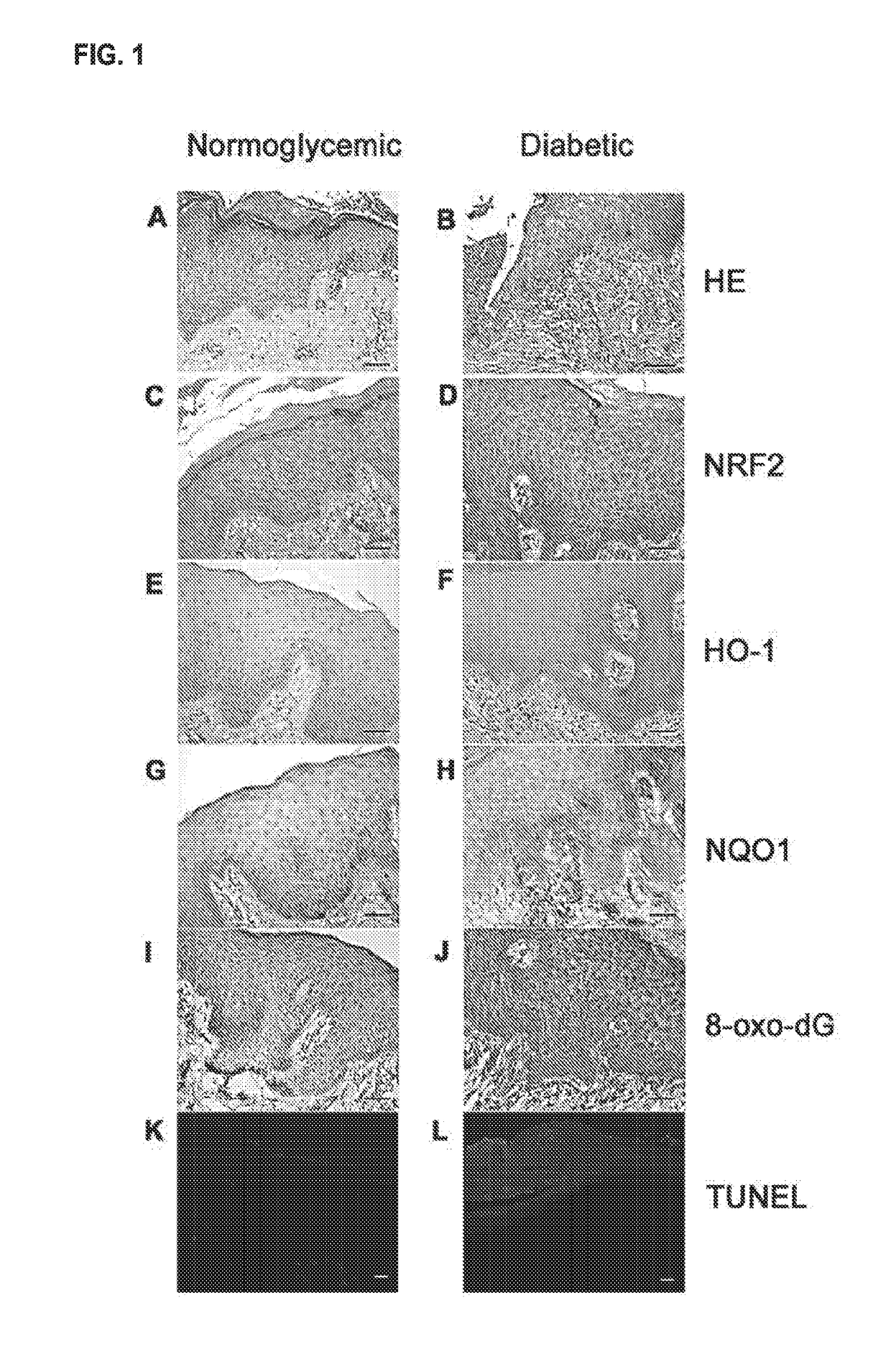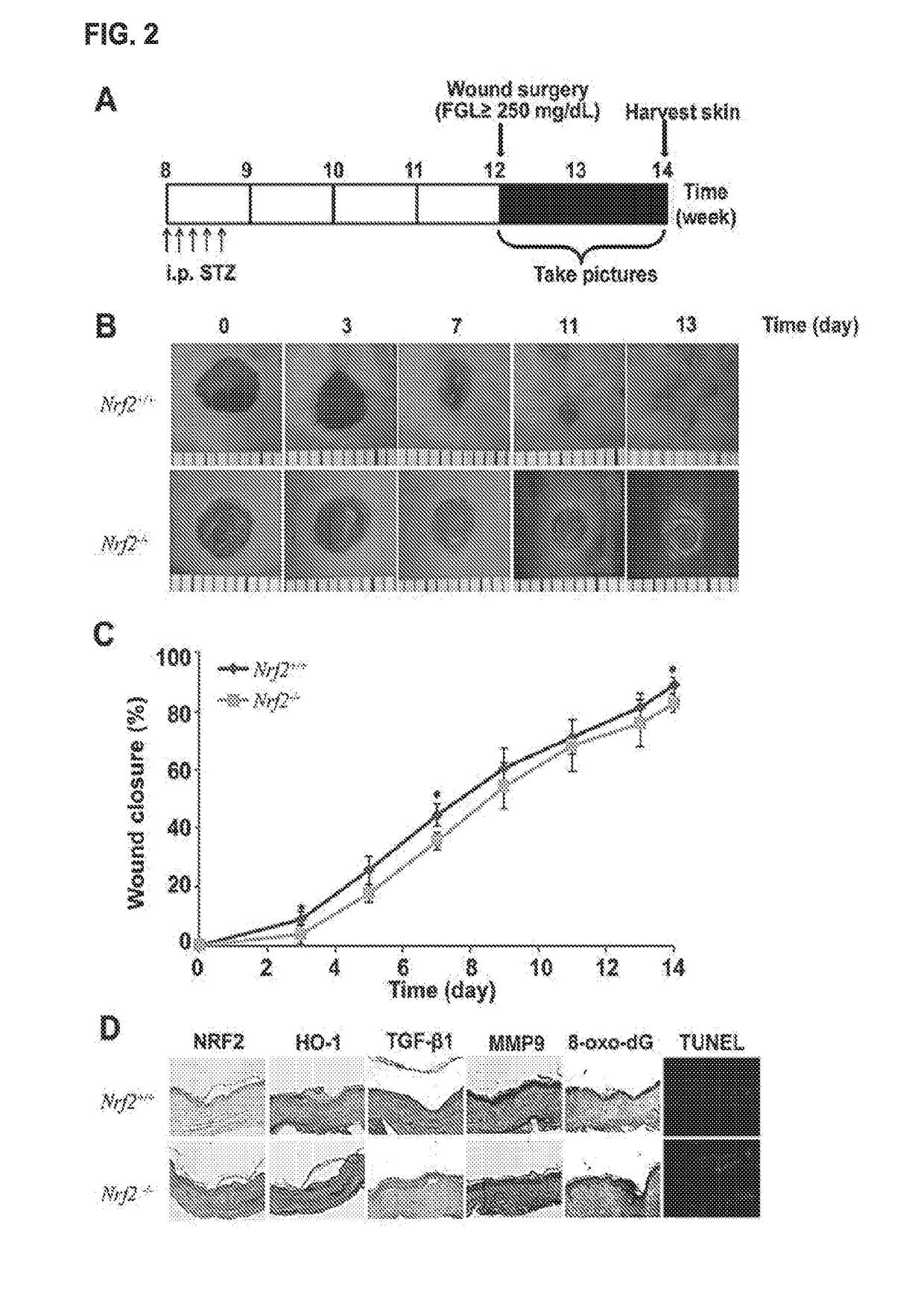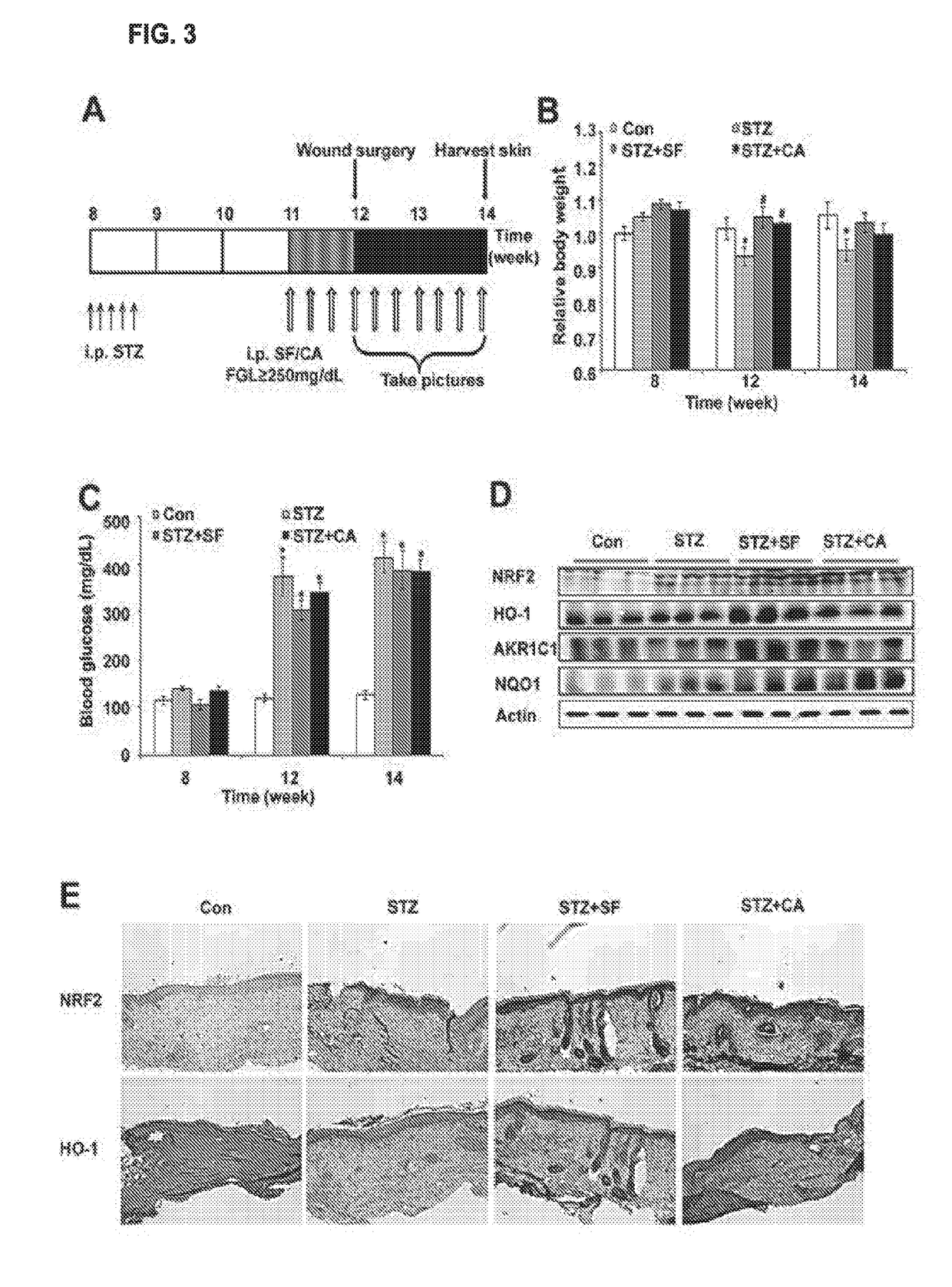Compositions and methods for treatment, amelioration, and prevention of diabetes-related skin ulcers
- Summary
- Abstract
- Description
- Claims
- Application Information
AI Technical Summary
Benefits of technology
Problems solved by technology
Method used
Image
Examples
example 1
[0065]This example provides the materials and methods for Examples I-IX.
[0066]Chemicals, antibodies and cell culture. Cinnamaldehyde (CA), streptozotocin (STZ), and 2′,7′-dichlorofluorescein diacetate (DCF) were purchased from Sigma (St. Louis, Mo.). L-sulforaphane (SF) was obtained from LKT laboratories (St. Paul, Minn.). Primary antibodies against Ki67, NRF2, MMP9, HO-1, AKR1C1, TGF-β1, and Actin, as well as horseradish peroxidase (HRP)-conjugated secondary antibodies were from Santa Cruz Biotechnology, CA. Anti-8-dihydro-2-deoxyguanosine (8-oxo-dG) antibody was purchased from Trevigen. Inc. (Gaithersburg, Md.).
[0067]Human immortalized keratinocytes HaCaT were obtained from the Arizona Cancer Center (see, e.g., Boukamp P, et al., J Cell Biol 106:761-771, 1988). Cells were grown in Dulbecco's modified Eagle's medium (DMEM) containing low glucose (LG, 5.5 mmol / L) and 10% fetal bovine serum (FBS) in an incubator at 37° C. with 5% CO2. For the experiments, the cells were starved in se...
example ii
[0077]This example describes that perilesional skin tissues of diabetic patients are under severe oxidative damage with activation of the NRF2-mediated antioxidant response.
[0078]The perilesional skin tissues were collected from 11 normoglycemic and 12 diabetic patients for pathological (H&E) and immunohistochemical analyses (IHC). Compared to the normoglycemically perilesional skin tissue, the diabetically perilesional tissue has more inflammatory cells infiltration, less granulation tissue formation, and edema, indicating an impaired healing process in hyperglycemic condition (FIG. 1A,B). IHC analyses showed that NRF2 and its downstream targets HO-1 and NQO1 were much more highly expressed in diabetic skin than in the skin of trauma patients (FIG. 1C-H). Moreover, NRF2 was mostly expressed in the epidermal layer. Next, oxidative DNA damage was measured using IHC with an anti-8-oxo-dG antibody. Only moderate staining was detected in the trauma skin tissue whereas a stronger stainin...
example iii
[0079]This example demonstrates that deletion of Nrf2 delays wound healing in an STZ-induced diabetic mouse model.
[0080]Since diabetic skin tissues from human patients display a high level of oxidative stress, the role of NRF2 in wound healing was further investigated in an STZ-induced diabetes mouse model using Nrf2+ / + and Nrf2− / − C57BL / 6 mice. Following induction of diabetes by five STZ injections, two wounds were made in the backs of diabetic Nrf2+ / + and Nrf2− / − mice and were photographed to compare and quantify wound closure (FIG. 2A). A gross examination of the wounds revealed there was an obvious delay in wound healing of diabetic Nrf2− / − mice compared to diabetic Nrf2+ / + mice (FIG. 2B). The wound closure of diabetic Nrf2− / − mice was slower throughout the entire healing process (FIG. 2B,C). At day 14, the wound skin tissues were harvested to analyze the expression of proteins by IHC. As expected, diabetic Nrf2− / − mouse skin had no detectable levels of NRF2, whereas the express...
PUM
 Login to View More
Login to View More Abstract
Description
Claims
Application Information
 Login to View More
Login to View More - R&D
- Intellectual Property
- Life Sciences
- Materials
- Tech Scout
- Unparalleled Data Quality
- Higher Quality Content
- 60% Fewer Hallucinations
Browse by: Latest US Patents, China's latest patents, Technical Efficacy Thesaurus, Application Domain, Technology Topic, Popular Technical Reports.
© 2025 PatSnap. All rights reserved.Legal|Privacy policy|Modern Slavery Act Transparency Statement|Sitemap|About US| Contact US: help@patsnap.com



